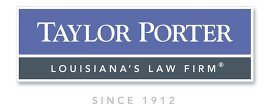CMS Revises NGHP User Guide on Monetary Thresholds
February 14, 2020
By Barrye Miyagi
barrye.miyagi@taylorporter.com
Partner, Taylor Porter
Practice Group Leader, Medicare Secondary Payer and MMSEA (Section 111) Compliance
On January 31, 2020, CMS updated the NGHP User Guide for Section 111 reporting. Defendants and Responsible Reporting Entities (“RREs”) refer to this User Guide to determine when a Settlement, Judgment or other payment (also referred to as a “TPOC”) must be Section 111 reported.
While CMS routinely updates the User Guide, most updates contain technical or relatively minor revisions. The most recent update appears, at first glance, to contain no revisions. In fact, for those defendants who handle workers’ compensation and liability cases (that do not involve exposures), the updated User Guide contains no effective change from the prior version. For those who handle exposure, implantation and ingestion cases, however, the update may be significant when evaluating the obligation to Section 111 report a TPOC.
As a brief primer, the User Guide sets the parameters for when certain payments to Medicare beneficiaries must be reported to the CMS. In general, payments to Medicare beneficiaries who claim and/or release medical expenses must be Section 111 reported, unless the payment is under the CMS monetary threshold for reporting or another limited exception to Section 111 reporting applies.
Prior to January 31, 2020, the User Guide provided monetary reporting thresholds for Section 111 reporting payments to Medicare beneficiaries in three types of cases: workers’ compensation, no fault and liability. Reporting payments, such as settlements or judgments, under the monetary threshold was optional. User Guides issued prior to January 31, 2020 contained no reference to different types of liability cases. In general, reporting was mandatory for all liability cases settled over the monetary threshold and optional for liability cases settled under threshold.
The January 31, 2020 User Guide contains the addition of three words: “physical trauma-based” injury. In describing the monetary threshold for Section 111 reporting liability cases, the User Guide provides that as of January 1, 2020, the threshold for physical trauma-based liability insurance settlements will remain at $750.00 (emphasis added to the new text of the User Guide). These three words, to many, appear insignificant. However, further analysis is warranted. Does the CMS divide liability cases into categories? Are some types of liability cases treated differently by CMS than others? For those of you who read CMS’ policies and Alerts on Section 111 reporting, you know that CMS does sometimes treat exposure, implantation and ingestion cases differently from other cases. Was the intent of this minor addition to the User Guide to distinguish physical trauma-based injuries from other injuries? If so, what other categories should be considered?
If we analyze the updated User Guide as a whole, the CMS now has monetary thresholds for Section 111 reporting of TPOCs in no fault cases, workers’ compensation cases and “physical trauma-based” liability cases. There is no monetary threshold for Section 111 reporting in any other type of case. While there may be room for argument, it appears, absent another exception to Section 111 reporting, that payments to Medicare beneficiaries in exposure, ingestion and implantation cases must be Section 111 reported – regardless of the amount of the payment.
The CMS User Guides, Alerts and regulations govern a wide-body of information. Collecting and drafting that information undoubtedly presents a challenge. It is clear that the CMS put a lot of thought into the NGHP User Guide, and the User Guide provides invaluable guidance to companies who are obligated to Section 111 report.
I do wish the User Guide included some additional information such as a definition of physical trauma-based injury or a clear sentence on the types of cases that must be Section 111 reported regardless of the amount of the resolution. I would also like to see a more forward effective date. RREs who may have settled exposure cases under threshold prior to the revision may not have obtained Section 111 reporting information. Contractors who submit Section 111 reports on a routine basis may need to revise their programming logic to capture and report all exposure, ingestion and implantation cases, regardless of the amount of resolution. The industry needs sufficient notice to collect the information that is required for a mandatory Section 111 report.
For advice on best practices for compliance with the MSP or how the most recent revision to the NGHP User Guide may affect your business, please contact Taylor Porter Partners Barrye Miyagi or Cindy Amedee.
Read our Case Studies
See how we can help. Contact us today
- Disclaimer
- © Taylor, Porter, Brooks & Phillips L.L.P. All rights reserved.



